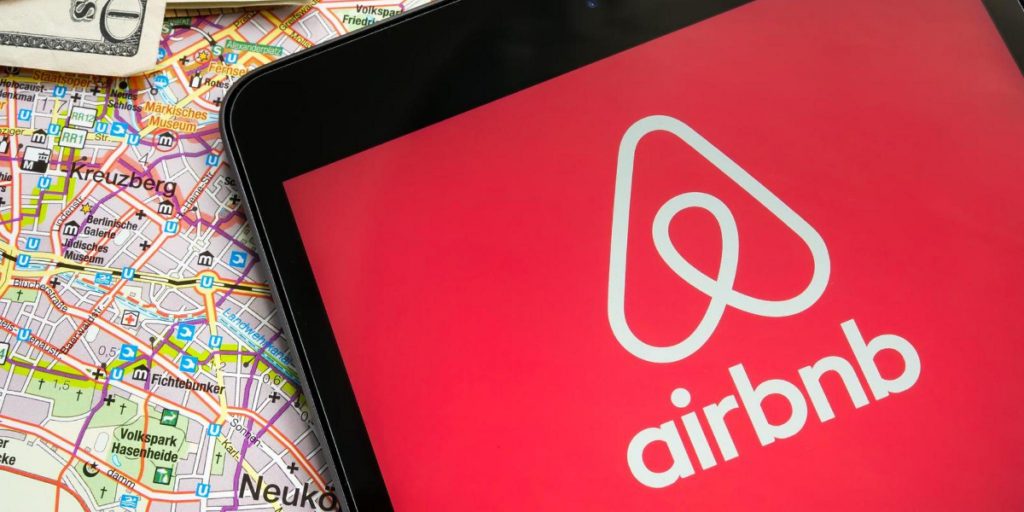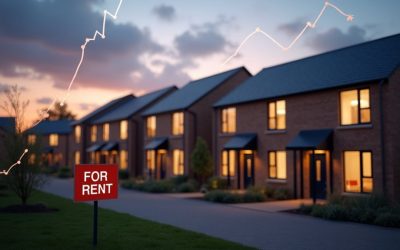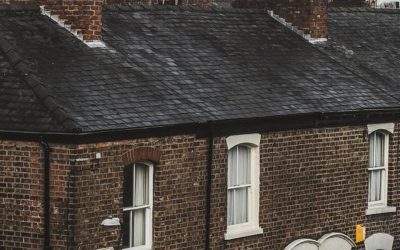From several points of view, a rental property can be a sound investment. The most critical factor to consider when determining whether to invest in a rental property is the return on investment (ROI). By paying attention to certain factors, you can maximise rental yields.
A UK rental property can make a profit of up to 11% per year. In Nottingham, you can buy a rental property for £170,278 and get a monthly rent of £1598. The highest profits are found in areas with high student populations. Areas like London, with high rents, experience yields as low as 2.5%.
In this article, I’ll discuss the factors that determine the profit of rental properties across the UK. I’ll also compare short-term vs long-term renting, focusing on the relative viability of Airbnb investments. Read on to learn how to maximise your profits when investing in a UK rental property.
An Overview of the Profit of Rental Properties in the UK
While it’s possible to make returns of up to 11% p.a. with rental property in the UK, this is not easy to pull off. A lot of factors have to align in your favour, and the opportunities for making such high yields are scarce.
The average rental yield for property in the UK is 3.63%.
With an annual yield of barely 4%, it could take decades to recover the initial investment. However, this is partially offset by the fact that houses appreciate in value. In as little as five years, the value of a property could have appreciated by 20%.
Despite this seemingly poor outlook, a rental property remains a great investment.
It’s one of the safest ways to invest. It’s a great store of value and an effective way to protect yourself against inflation.
All in all, rental property is a good investment. Still, before you buy a property, you should position yourself to make maximum returns. The goal is to get as close as possible to the highest rental yields of 11%.
Identifying the Most Profitable Rental Properties in the UK
Novice investors are surprised to learn that the most expensive properties aren’t necessarily the most profitable. And I don’t really blame them.
Higher Rents Don’t Correlate to a Higher ROI
Properties that are costly to acquire typically come with significantly high rents, especially in affluent neighbourhoods. However, the higher rents don’t necessarily mean that the ROI is high.
If you’ve attended a number of investment classes, you’ve learned that the more you spend to acquire an asset, the higher the returns from that asset. It’s a general rule. However, with real estate in the UK, things are decidedly different.
Let’s use one of the most expensive neighbourhoods in England as an example.
In 2014, the average cost of a house in the Kensington and Chelsea borough of London was £1,195,000. At the same time, the average monthly rent was £2,275. This implies annual returns of just above 2%.
Compare this with rental yields from Hartlepool, in the North East of England.
In Hartlepool, you could buy a property for £109,000 and rent it out for £474 a month. This translates to annual returns of 5.2%—much better than the 2% in the prime area of London.
In London, you get more money per month, but you also spend so much money acquiring that property that the high rental income isn’t enough to ensure a good ROI.
If higher monthly rents don’t necessarily translate to a better ROI, what does?

Low-Cost Properties Seem To Have a Higher ROI
It may seem counterintuitive to some, but low-cost properties in the UK have better returns than high-value properties.
The main reason for this is the difference in initial investment. When a property is a whole £1 million cheaper, it becomes much easier to get a good ROI.
Track Capital conducted a survey to determine the areas with the highest rental yields in the UK.
Of the top ten results, six areas had an average asking price of less than £200,000. All the results had average annual rental yields of more than 9%.
The findings get even more interesting.
The survey identified areas with the worst rental returns in the UK. All ten of the worst areas had average property values of more than £500,000. Two of them had average values of more than £1,000,000. And one of them had average values of more than £2,000,000. These areas had annual returns of 1.9% – 2.4%.
The writing on the wall is abundantly clear: For the best yields, go for low-value properties.
High Student Populations Correlate to Higher ROI
If you want to make a killing with your rental property endeavour in the UK, invest in a location with a high student population.
The more students there are in an area, the higher the demand for housing, especially smaller units like studio apartments.
In an area like Manchester, which has a student population of over 100,000, your rental property can perform exceptionally well.
And there is data to back up the viability of areas with high student populations.
In the Track Capital survey, four of the top five areas by ROI are in locations with dense student populations, including:
- Two areas in Nottingham, with average rental yields of 11.3% and 11.1%.
- One area in Manchester, with an average rental yield of 10.1%.
- One area in Newcastle, with an average rental yield of 9.8%.
Nottingham is home to two universities and the largest teaching hospital in the UK. Manchester has five universities, while Newcastle has two.
So far, we’ve identified the winning strategy as acquiring relatively low-cost properties in areas with high student populations. The success of this strategy is backed up by data. Let’s look at the areas in the UK that meet the two criteria and have the highest rental yields.
Top 5 Areas With the Best Rental ROI in the UK
The Track Capital survey analysed 1350 postcode districts in the UK and listed the top 25 by annual rental yield. Some areas have multiple districts in the list, showing that they generally perform well.
These areas are:
- Yorkshire. Yorkshire has two districts in the top 10. They have an average annual return of 9.9%, earning Yorkshire first place on this list. The asking price for the property is an average of £280,000.
- Cardiff. Cardiff has two districts in the top 25, with an average annual return of 8.6%. The asking price for property in this area averages at £173,000.
- Southampton. Southampton also has an average annual ROI of 8.6%. However, the average asking price for houses is higher than in Cardiff, at £214,000.
- Newcastle Upon Tyne. With three postcode districts in the top 25, Newcastle has one of the best rental ROIs in the UK. Newcastle districts in the list have an average annual return of 8.5%. The average asking price is also pretty decent, at £166,000.
- Swansea. The asking price for properties in the Swansea districts with the highest yields averages at £203,000. Swansea has two districts in the top 25, with an average yearly ROI of 8.5%.
- Leeds. Leeds has two districts in the top 25, with an average annual return of 8.2%. The average asking price of a property in these districts is £179,000.
- Glasgow. With the lowest asking price among the top performers and a decent annual return of 7.7%, Glasgow is one of the most attractive areas for rental investment in the UK. It has two districts in the top 25. The average asking price of a property in the districts is £115,000.
The Profitability of Investing in Airbnbs in the UK
Once you own a rental property, you can choose to go one of two ways:
- Rent each unit of the property long-term to a single tenant—the conventional method.
- Rent each unit short-term to multiple tenants—the newer method, powered by Airbnb.
In some cases, renting out your property as an Airbnb can be significantly more lucrative. In fact, assuming that factors like demand and occupancy rates remain desirable, Airbnbs should invariably be more profitable than the conventional method of renting to a single tenant.
However, Airbnbs aren’t always more profitable for the following reasons:
- Profits depend on seasonality.
- Occupancy rates differ.

Profits Depend on Seasonality
If you’re renting out your property conventionally, chances are you will always have tenants.
If you maintain your property well and keep your tenants reasonably satisfied, you’ll likely have a replacement lined up even when one of them moves out.
Airbnbs operate differently.
One way to think about Airbnbs is to compare them to hotels. Depending on where a hotel is, its rooms will be fully occupied for some months. For example, if a hotel is on the coast, it’s likely to make its best profits during spring and summer. For the rest of the year, business will be slow.
Airbnbs are much the same.
If there’s nothing happening in the area, like a conference or other event, occupancy rates remain low.
One of the ways to go around this is to have an Airbnb in a lucky area—where there’s always something happening. You’d have to do your research properly and consult historical data from other Airbnb operators to be sure.
If you suspect that seasonality will greatly reduce the profitability of your Airbnb, consider going the traditional way and renting out to long-term clients.
Occupancy Rates Differ
A major factor affecting occupancy rates in Airbnb rentals is location. Airbnbs in certain locations have higher average occupancy rates than those in others.
Some areas don’t depend only on tourist activity or events for Airbnb occupancy. Sometimes, commuters may choose to stay in an Airbnb and go home on weekends. Or there may be many business people coming into town for a few days at a time. Such factors may make certain locations more favourable for short-term rentals.
If you have a rental property and are wondering whether to go the short-term or long-term way, it would be a great idea to find out Airbnb occupancy rates in your area. If they’re favourable, you’re more likely to succeed if you go the Airbnb way.
The Most Profitable Areas for Airbnb Rentals in the UK
A yardstick that investors use when evaluating the viability of buying a property and setting up an Airbnb is the time it would take to recoup the initial investment. The more profitable an Airbnb is, the less time it takes to recover the cost of the property.
Going by this criterion, here are the five most profitable areas to set up an Airbnb in the UK, along with the time it would take to recover your initial investment:
- Bradford – 9 years.
- Swansea – 11 years.
- Stoke – 12 years.
- Plymouth – 14 years.
- Belfast – 14 years.
The top two entries, Bradford and Swansea, also feature prominently in the list of the top 25 areas with the highest rental yields in the UK. They are both in the top 10.
If you’re looking for an excellent location for a rental investment, you are unlikely to go wrong with the two.
Bradford particularly stands out. It has the highest occupancy rate on the list, at 83%. It also has the highest average monthly revenue of £1229 and the second lowest average asking price: £135,000.
A Comparison of Short-Term vs. Long-Term Rental Yields
Holding all factors constant, short-term rentals via platforms like Airbnb should be more profitable than long-term rentals. However, factors like occupancy rates and seasonality often reduce the profitability of short-term rentals.
The above comparison is from a theoretical point of view. Let’s see what the data says.
Case Study: Bradford
Bradford is the best area in the UK to set up an Airbnb rental.
In terms of long-term yields, one of the postal code districts in Bradford is the third best, with an average annual yield of 10.6%. In this district, the average asking price for a property is £54,500, and the average asking rent is £483. It would take about ten years to recover the initial cost of the property.
Using Airbnb data about the wider Bradford area, the average asking price is £135,000. Renting out such properties on Airbnb brings in average monthly revenue of £1,229. This translates to an annual yield of 10.9%.
The difference in yields between short-term and long-term properties is negligible.
Let’s look at Swansea, which is an excellent location for both Airbnb and long-term rentals.
Case Study: Swansea
Two postcode districts in Swansea feature in the top 25 districts in the UK by annual rental returns.
Swansea as a whole is also second on the list of the top five areas in the UK by Airbnb profitability.
The average asking price for a house in Swansea is £143,000. If you decide to host an Airbnb, you can expect an average monthly revenue of £1,100. This represents an annual return of 9.2%.
In one of the Swansea districts that feature in the top 25 districts by rental yield, the average asking price of a property is also about £140,000. In this district, the average monthly rent for long-term tenants is £1073, representing an annual return of 9.2%.
In another Swansea district that features in the top 25 districts by rental yield, the average asking price for a house is £265,882. With a monthly rent of £1,706, the annual yield is 7.7%.
Going by the first district, there’s no difference between renting out your house as an Airbnb or tenants on a long-term basis. This is consistent with the Bradford case study.
However, in the second district, the annual yield of 7.7% from long-term tenants is lower than the average return of 9.2% from their short-term counterparts. This reflects the view that, in the right conditions, short-term rentals are more profitable than long-term rentals.
Conclusion
A return of 11% on the initial investment per year seems to be the maximum profit that rental properties in the UK can make.
Annual yields differ by location. In some areas in London, the yields can be as low as 2%, despite the rents being the highest in England. In areas where properties are relatively affordable, the returns are much higher.
Switching from long-term to short-term tenants doesn’t seem to have a significant effect on the returns. While Airbnbs generally bring in more daily, occupancy rates and seasonality reduce their profitability.
Sources:
- AirDNA
- A Luxury Travel Blog: The 5 Best UK Cities to be an Airbnb Host
- Greater London Authority: House Prices in London – An Economic Analysis of London’s Housing Market
- Just Do Property: Property Investment for Beginners
- Telegraph: Where to Invest in Buy-to-Let for the Highest Rental Yields
- Track Capital: UK Buy-to-Let Yield Map
- Is It Bad To Buy a Flat Instead of Renting? - February 20, 2023
- If You Buy a UK House at Auction, When Do You Pay? - February 15, 2023
- Why Are Houses in the UK So Overpriced? - February 7, 2023


